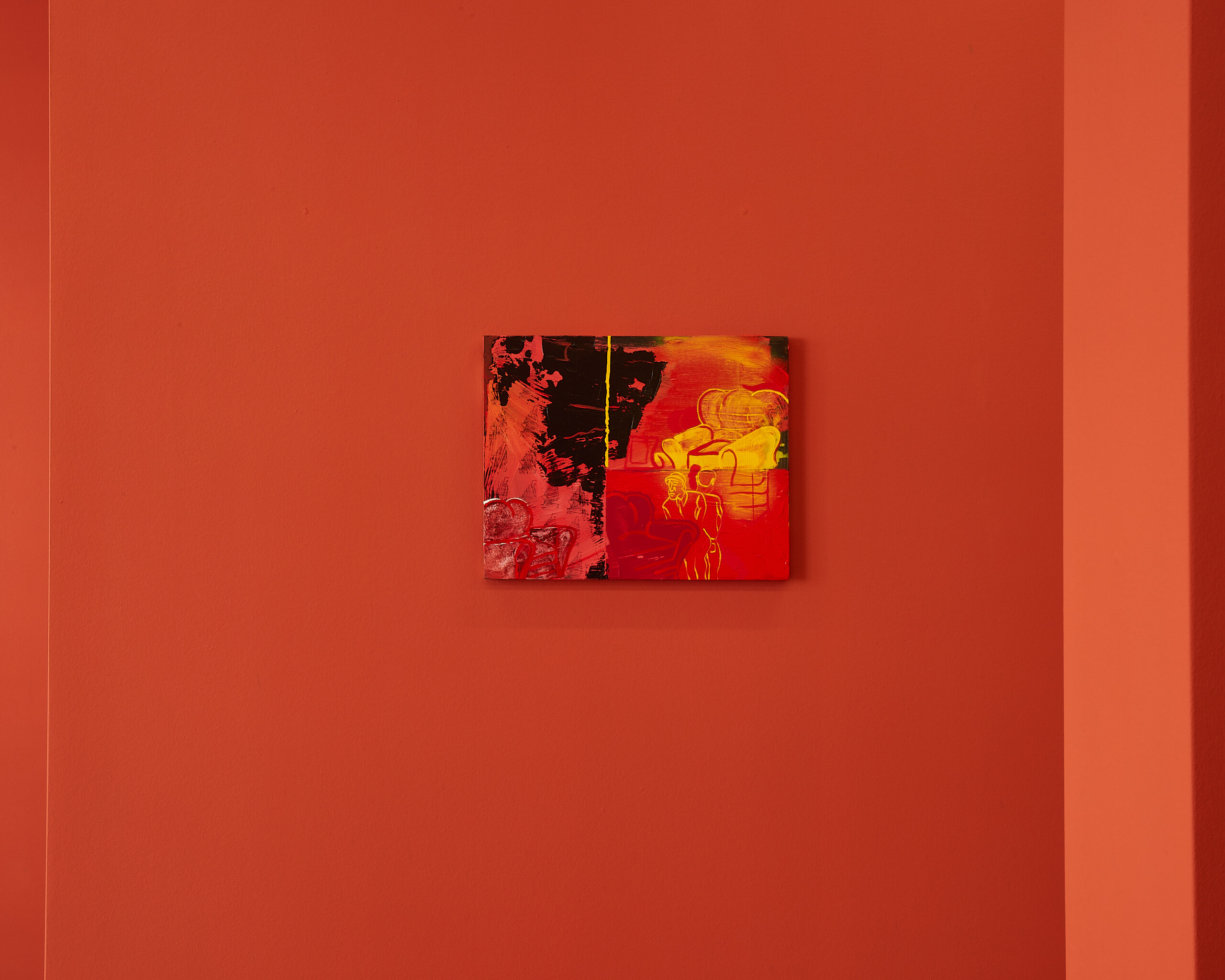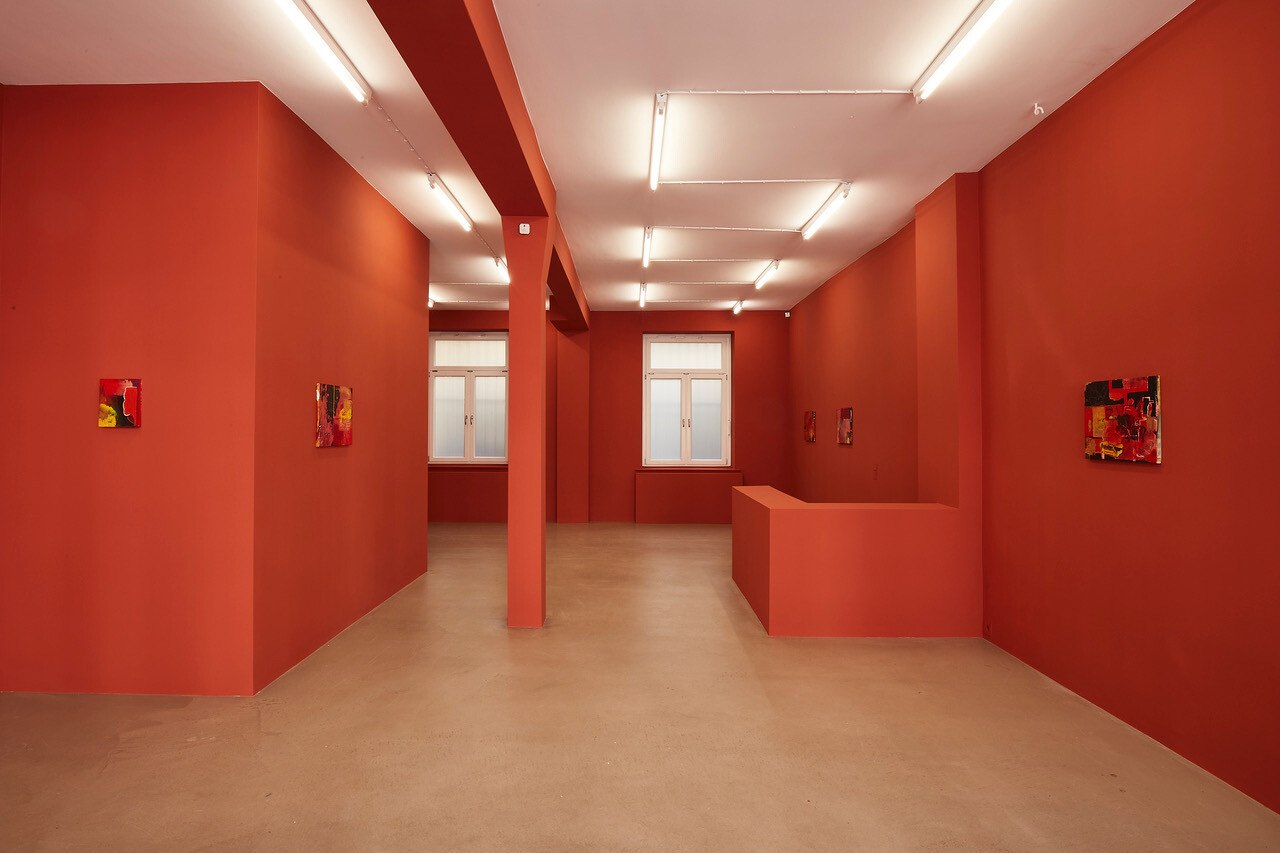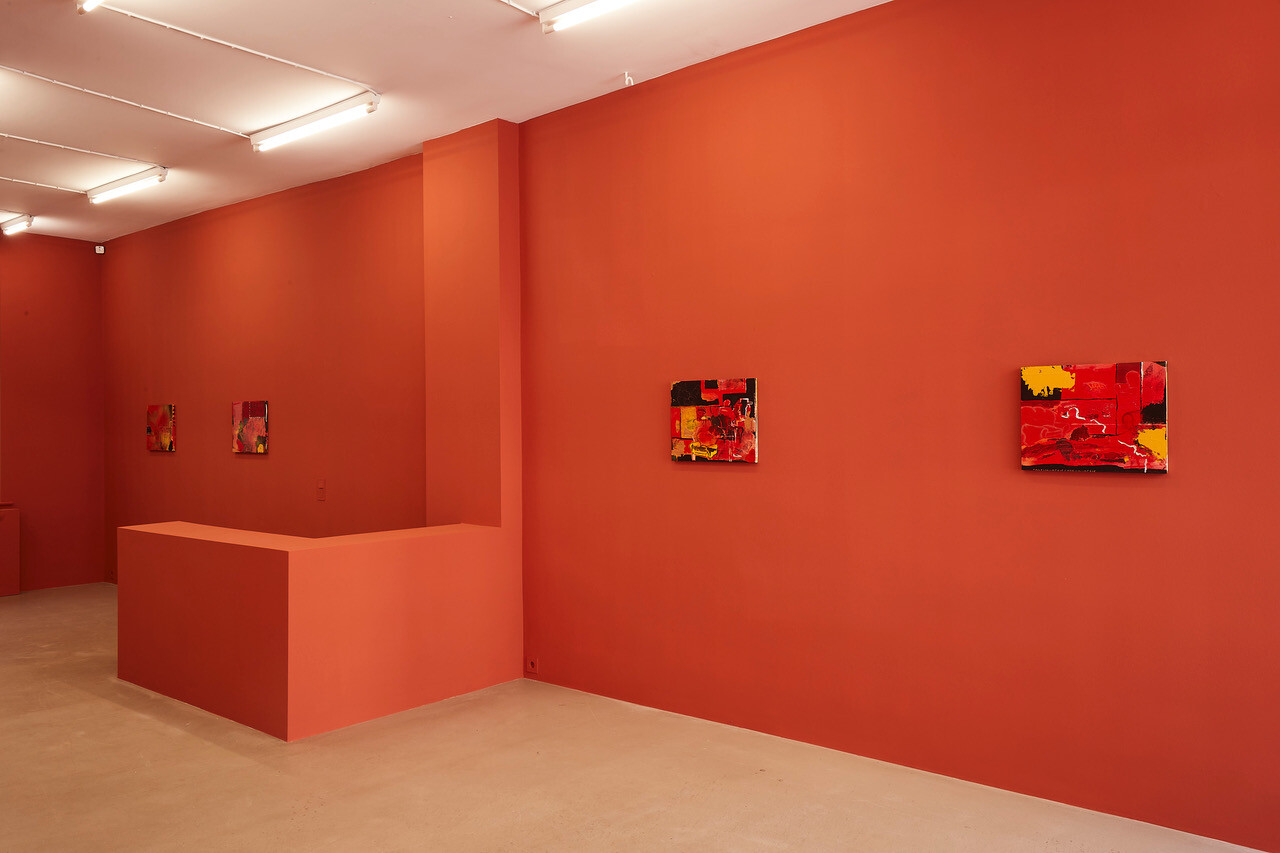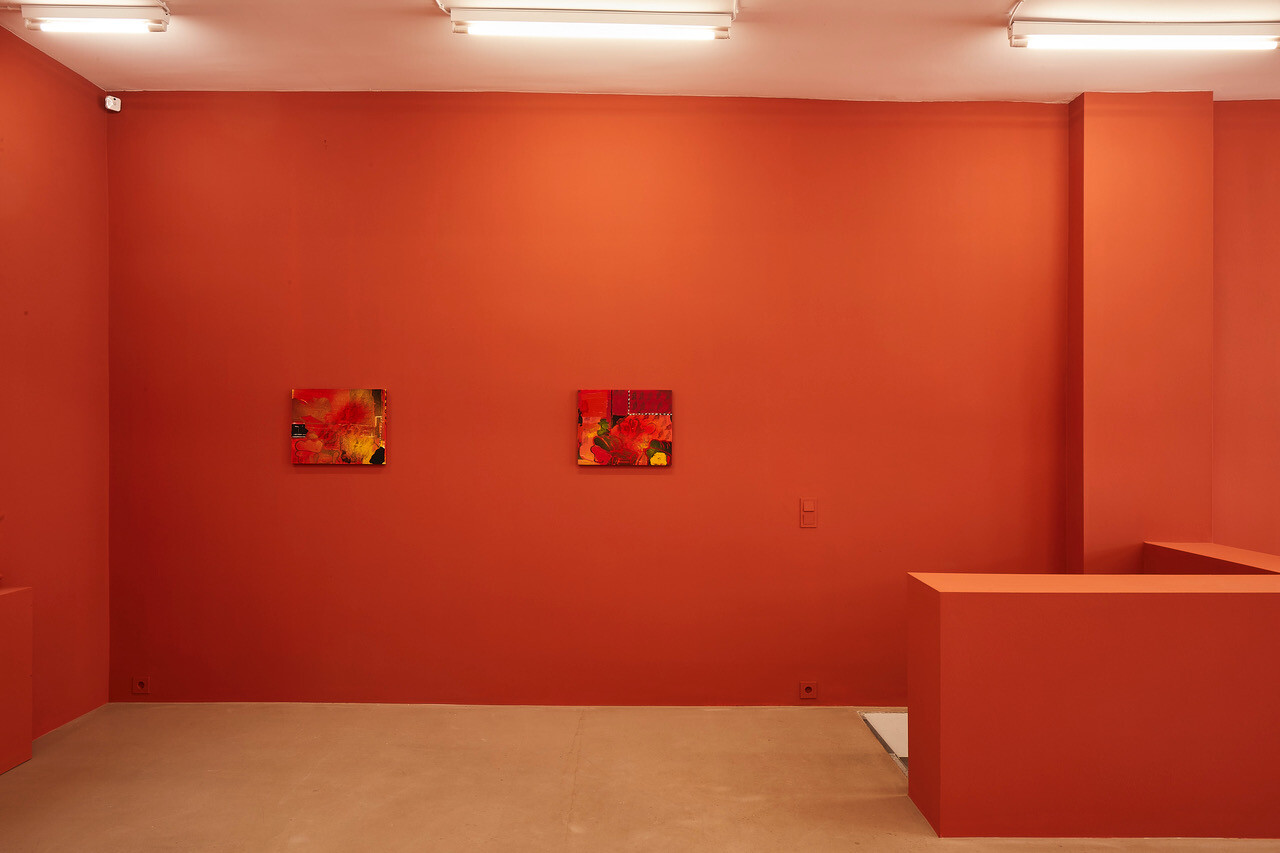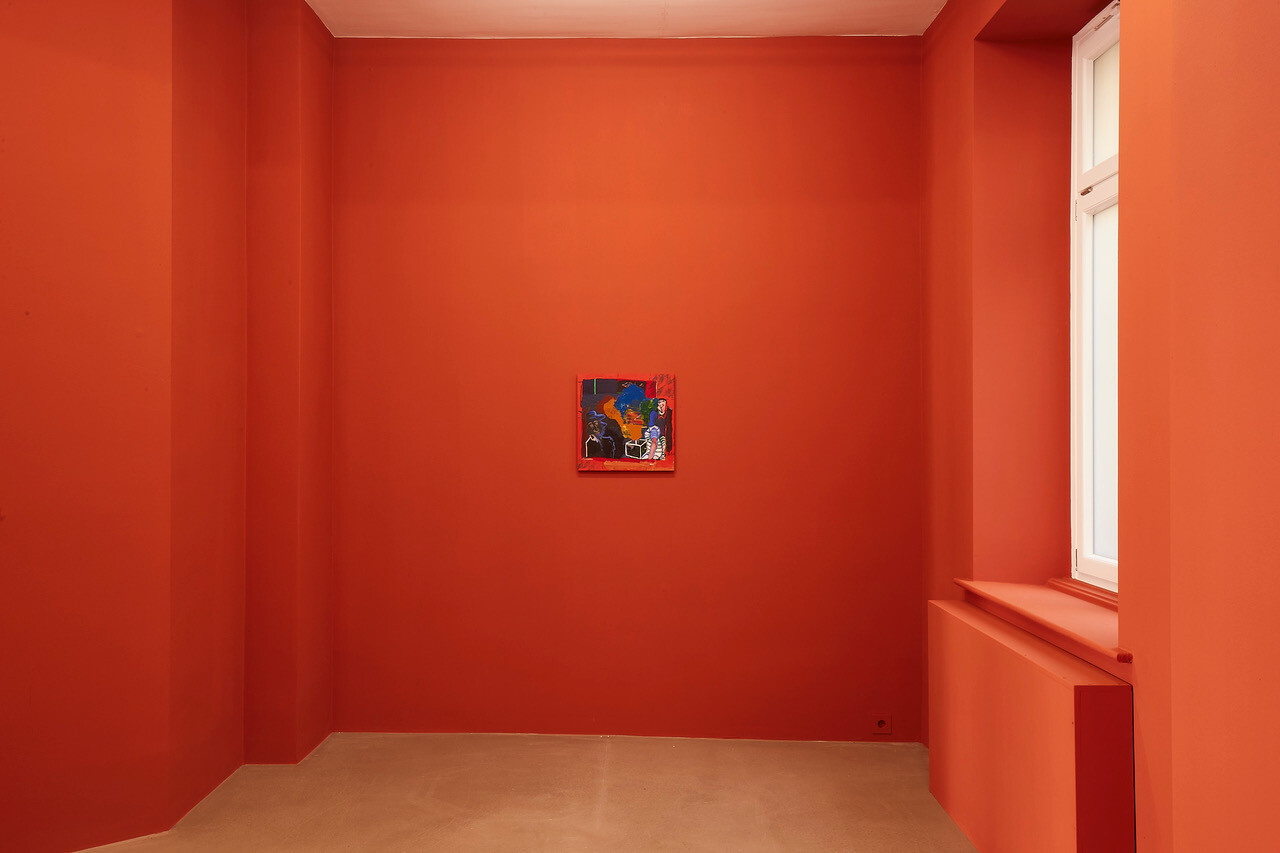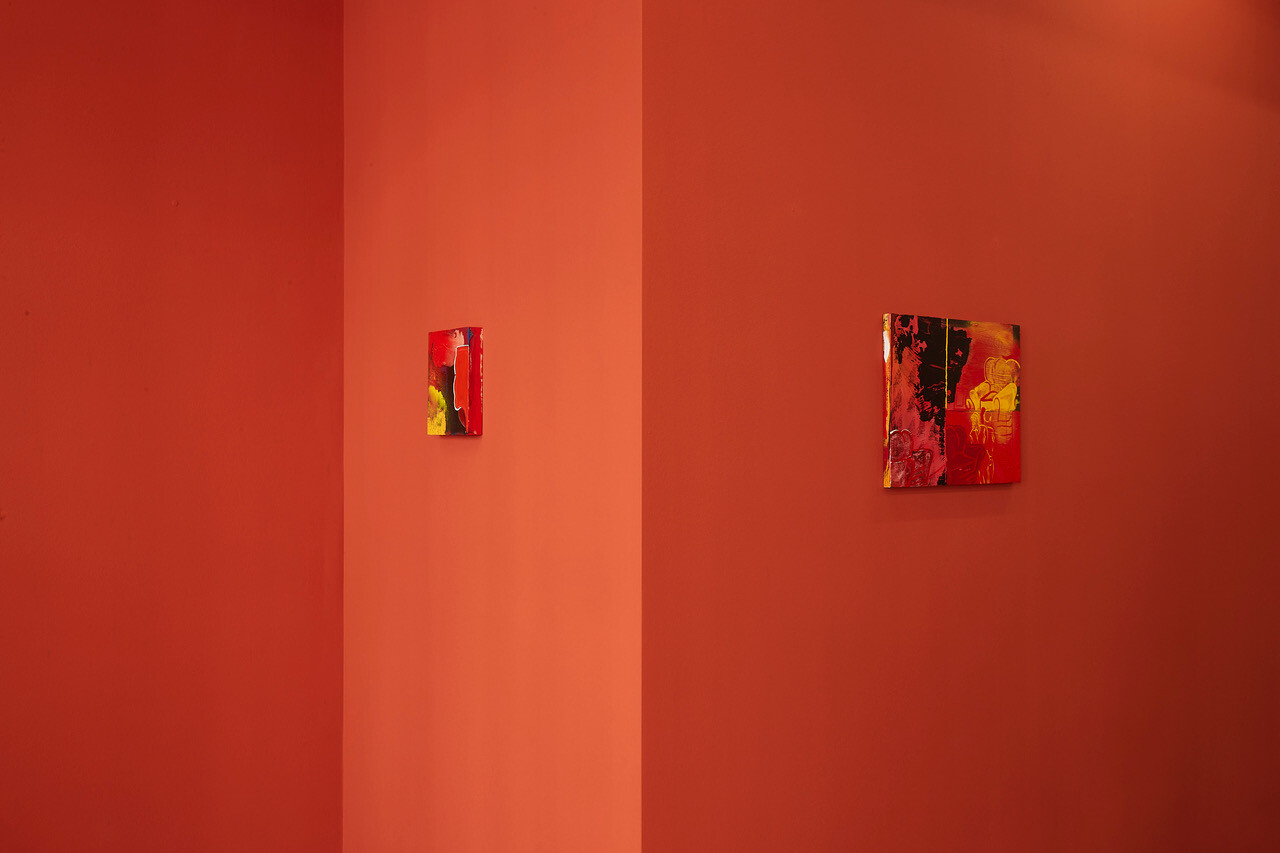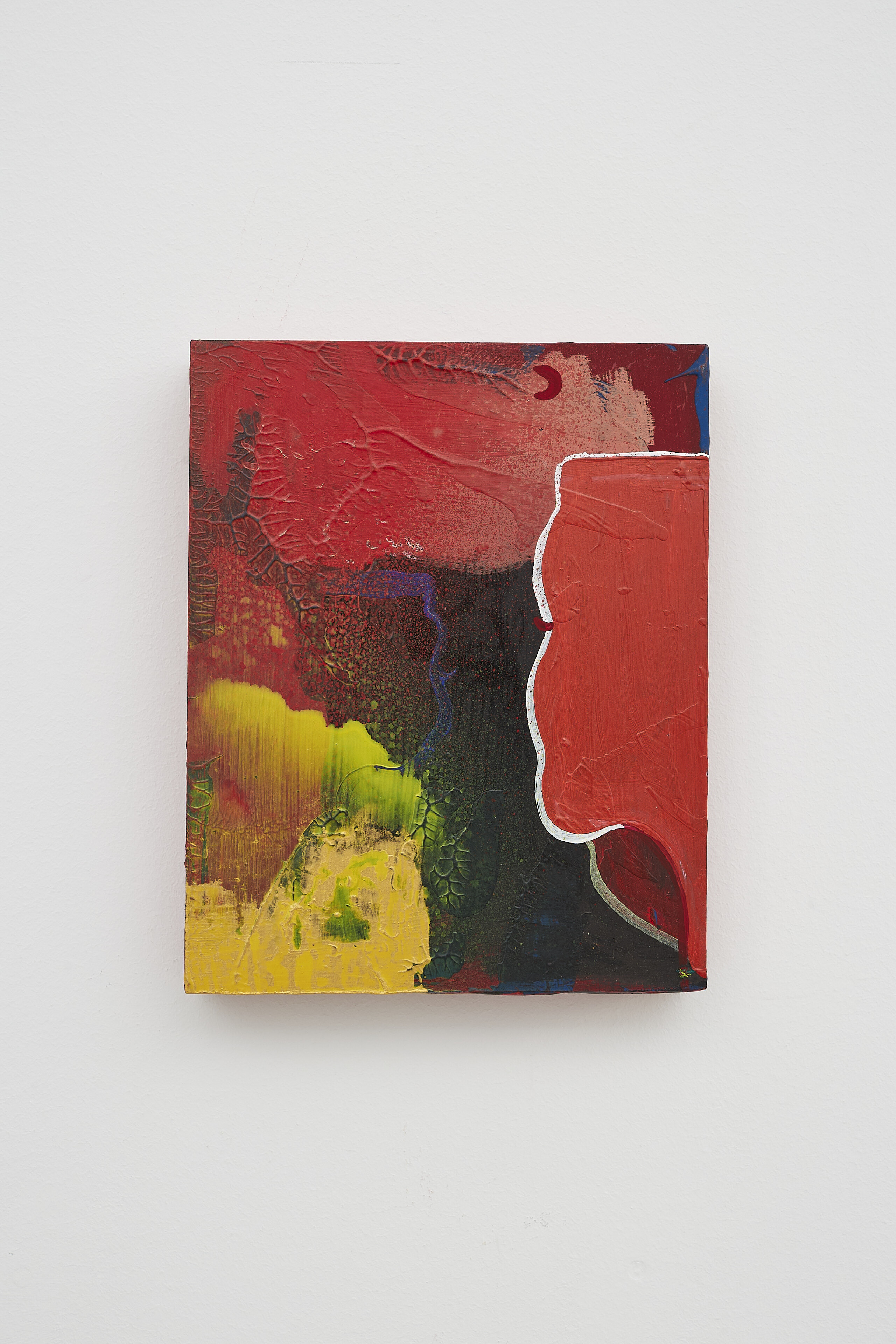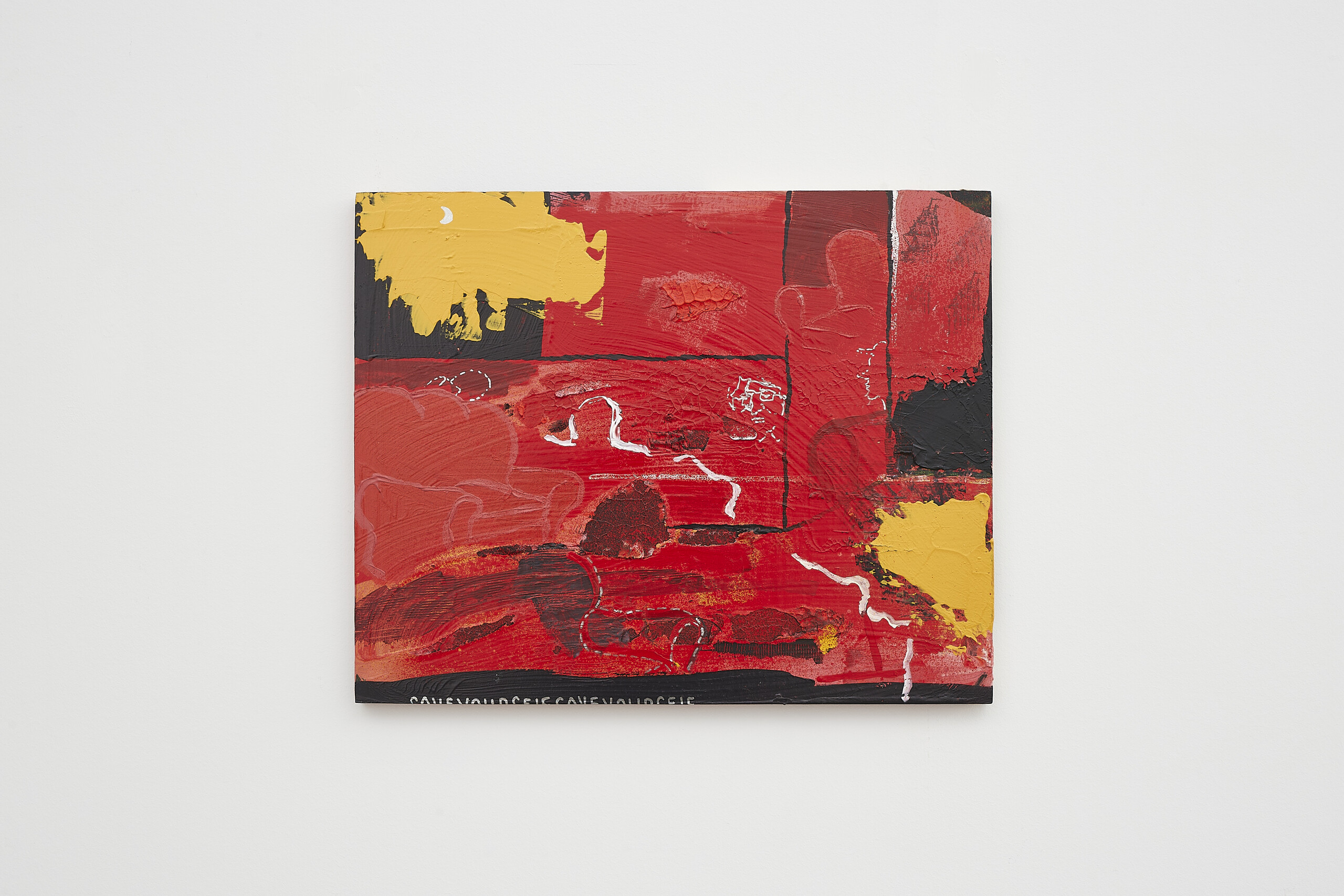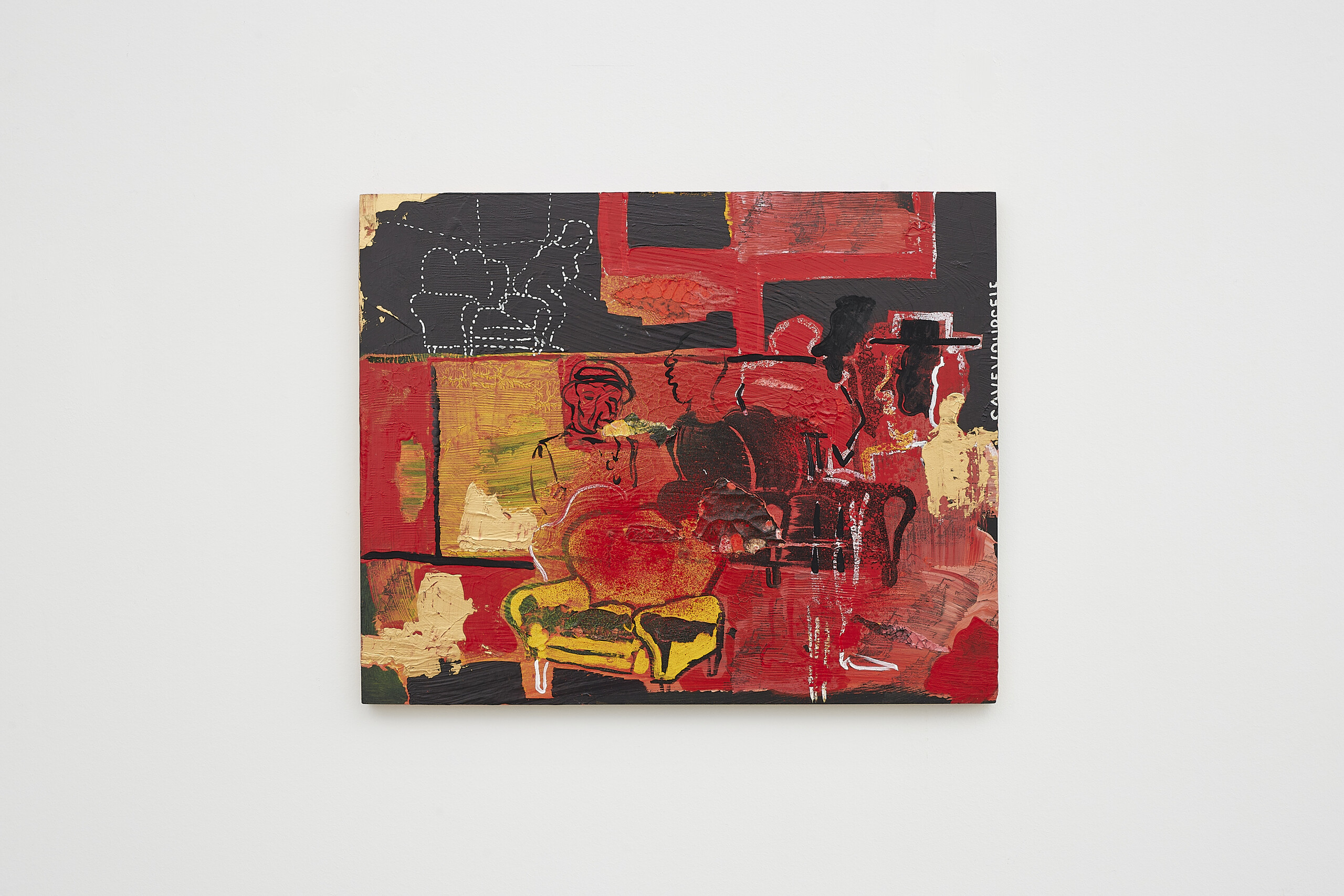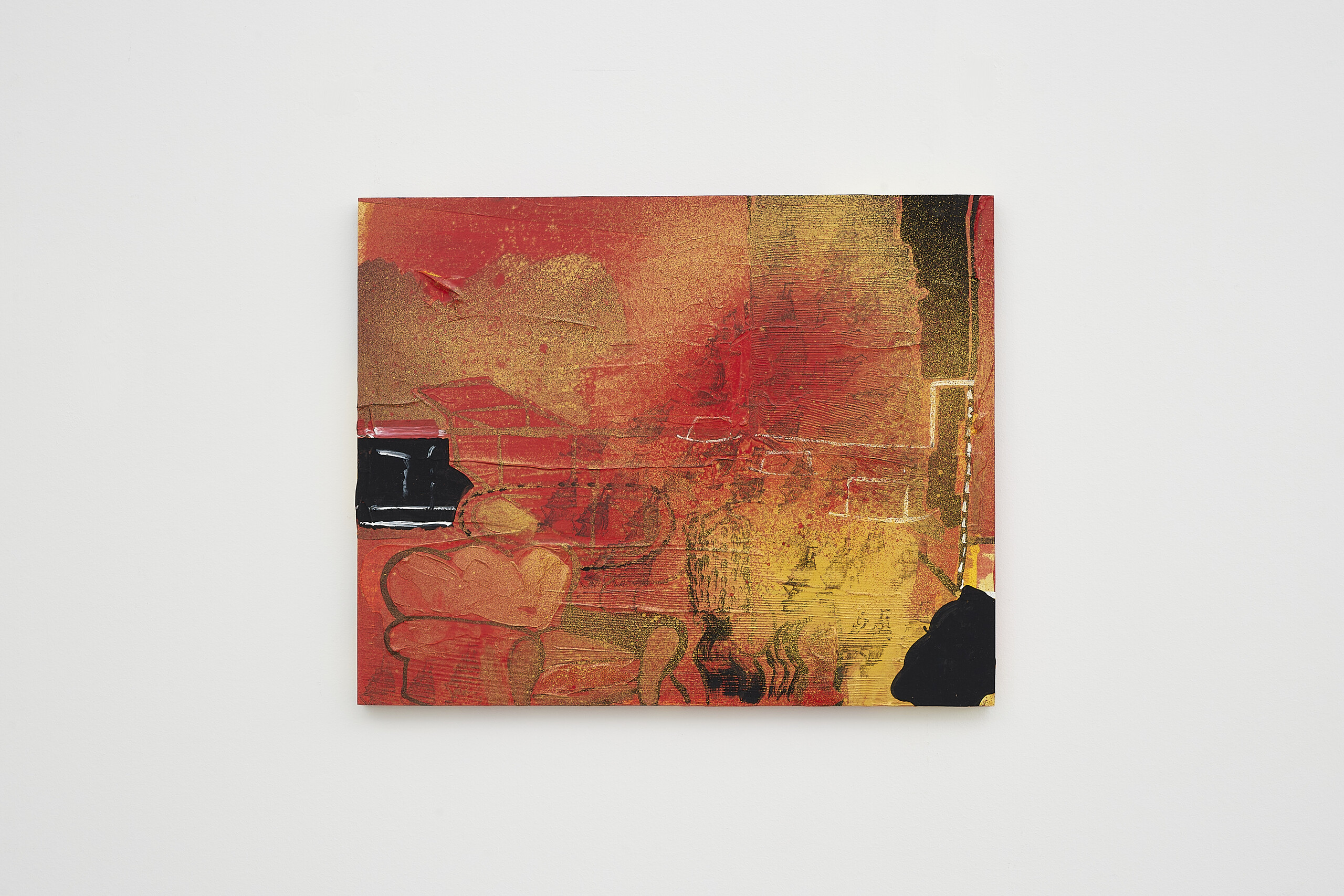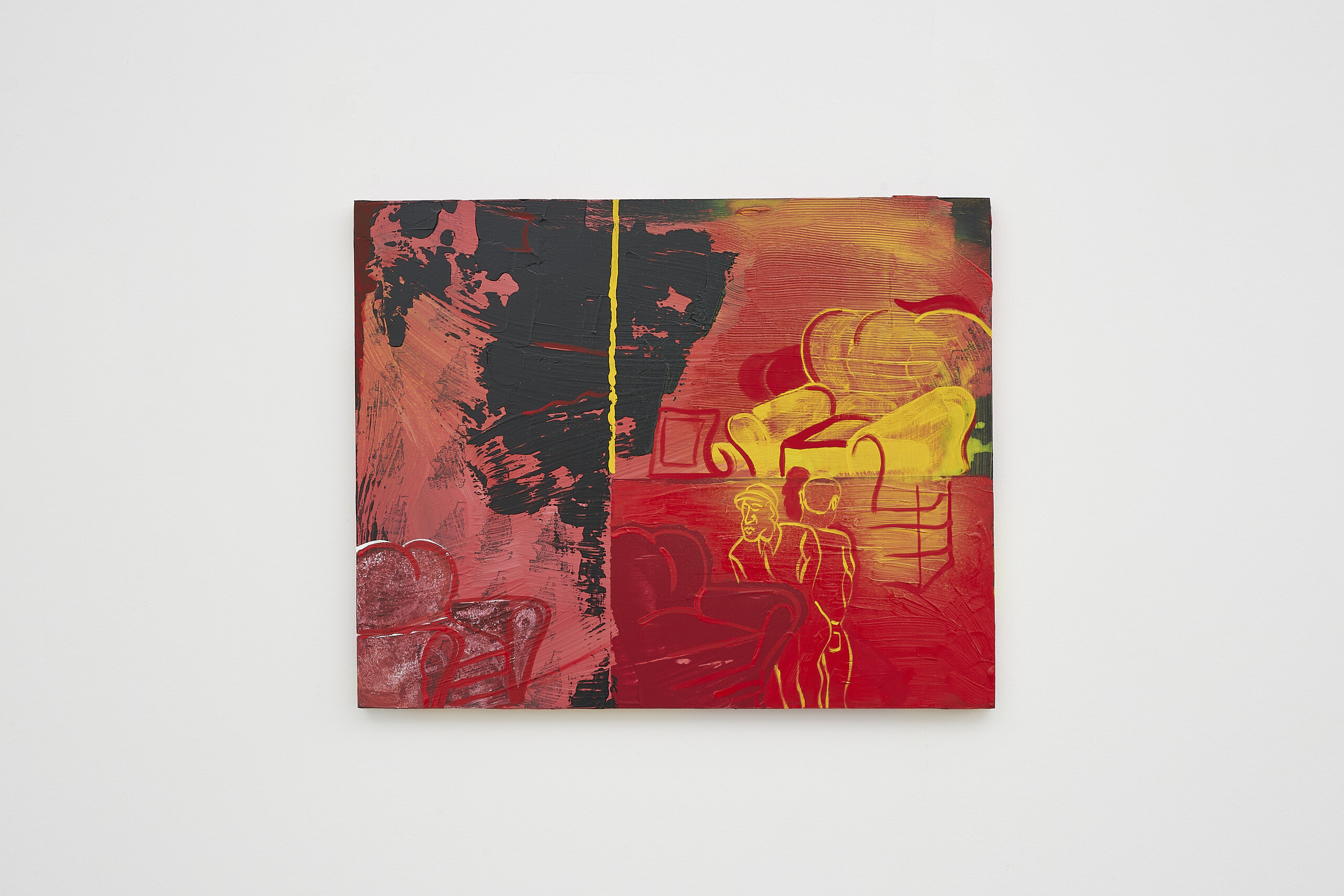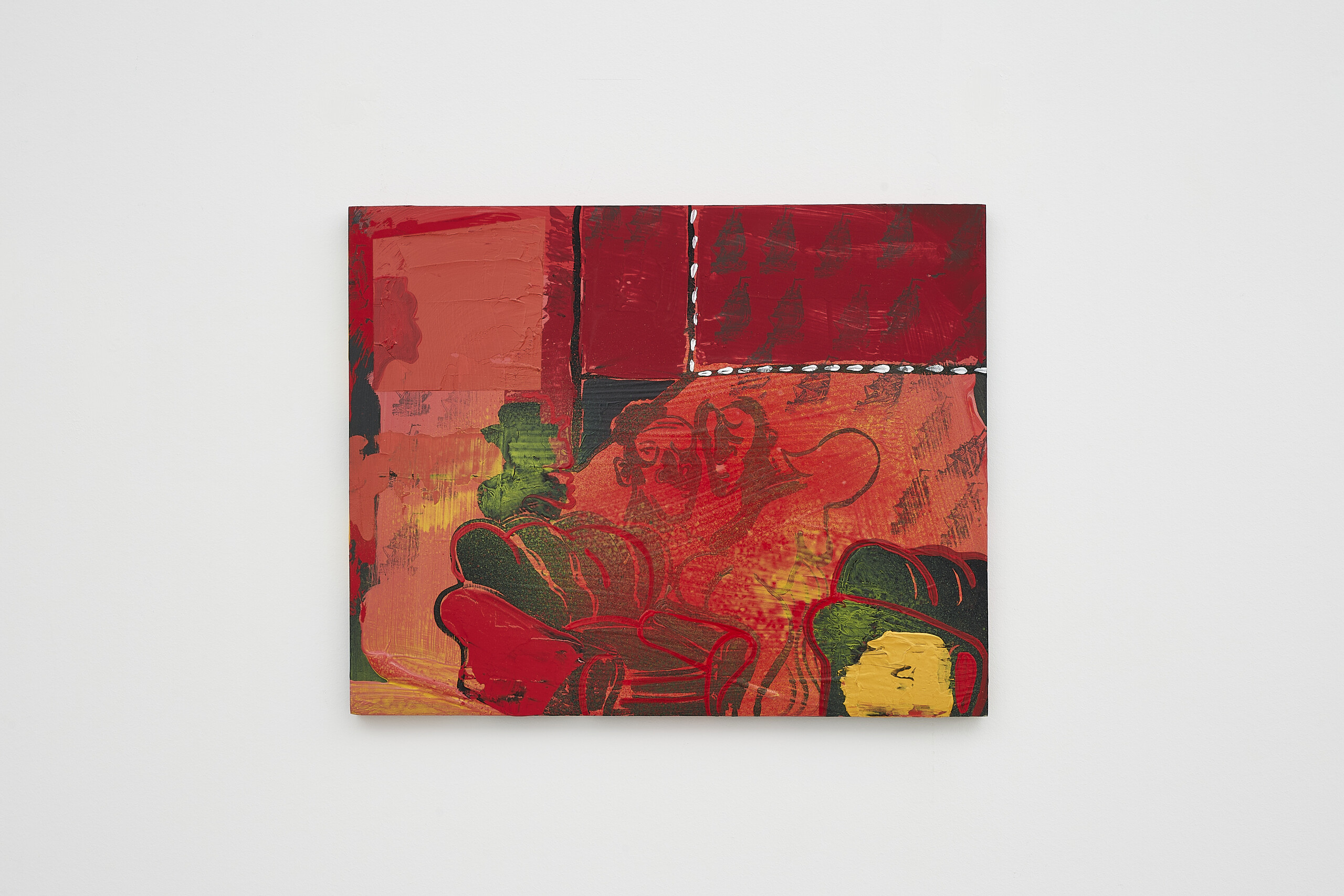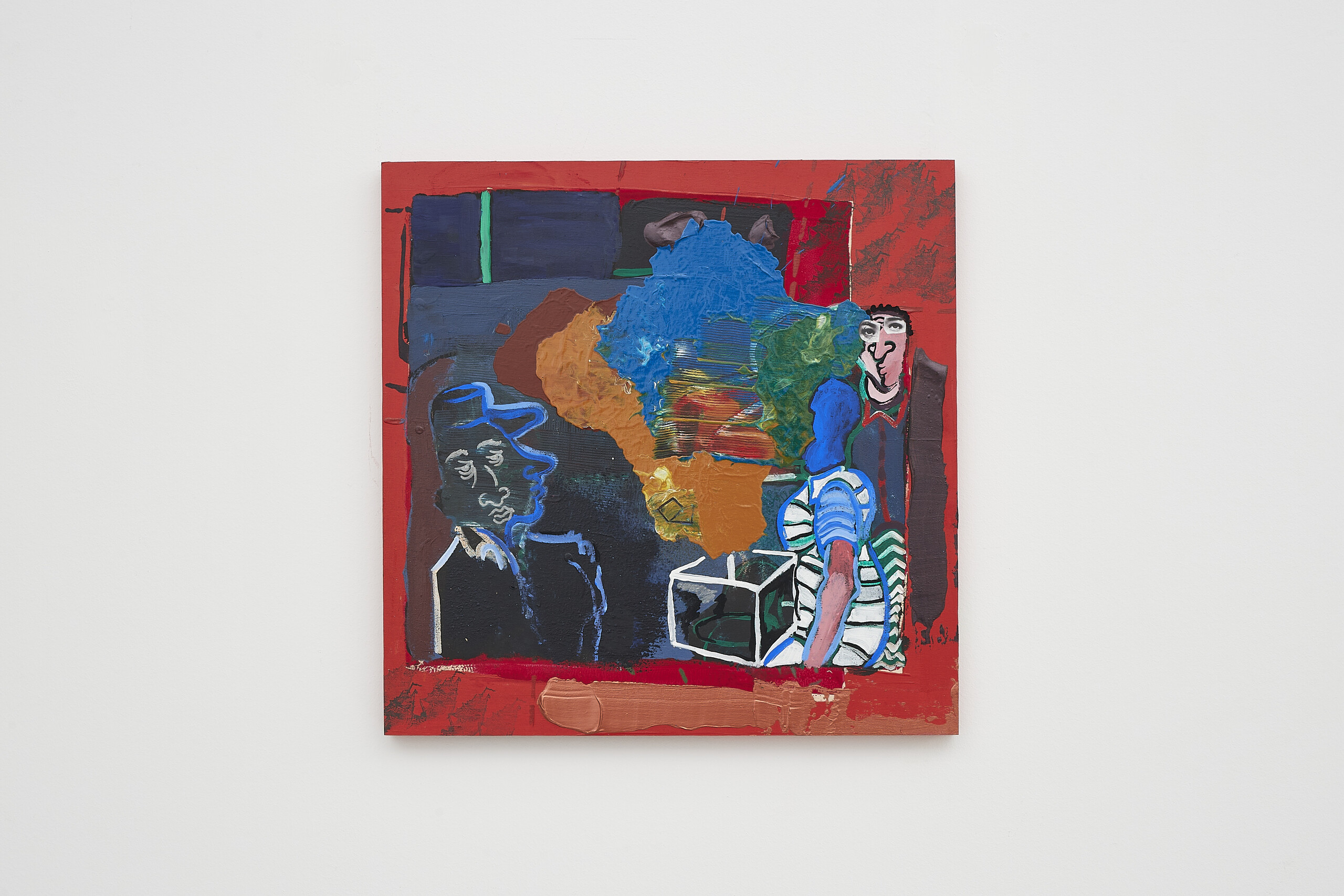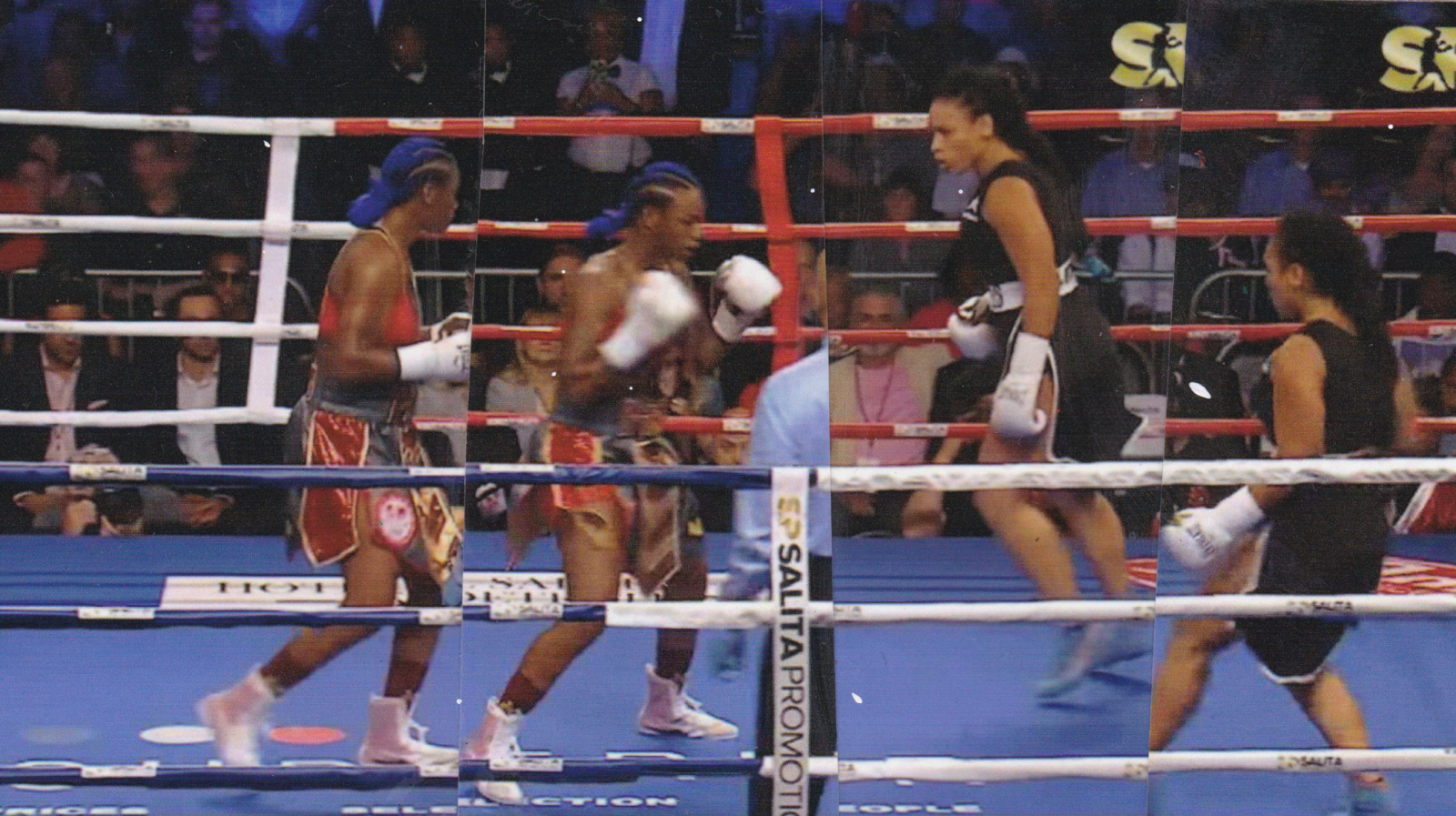For his first show at 14a, Walter Price has threaded seven new paintings along the gallery walls. As is common for Price’s practice, the works are situated at the threshold of figuration. The American artist’s process departs from abstraction, with figurative elements gradually entering the painting's composition. Devoid of a centre of gravity, Price’s motifs possess a dreamlike weightlessness. Price eschews clear narratives, aiming instead to evoke individual associations and meanings hidden in between layers of impasto and collage. His work is informed by an interest in the depiction of psychological phenomena such as repressed memories, referenced in the title of the show’s most overtly abstract work, and déjà vus.
Déjà vu’s fausse reconnaissance[1] is often experienced as an unsettling breach with reality. While the air of mystery that surrounds it has yet to be explained away entirely, the most common neurological explanation for its occurrence is the confrontation with a situation that is adequately similar to a large number of previous experiences and memories. The disintegrated states of generic domestic spaces that viewers encounter in works such as “Love them from a distance” and “Musculature” trigger an uneasy sense of familiarity. Elements such as the curvy wing chairs and the men in top hats that populate these spaces recur throughout the works exhibited at 14a, as well as throughout Price’s other drawings, paintings and sculptures. Despite their recurrence, these recurring characters remain abstract vessels to be filled with meaning by the viewer. In face of a media landscape obsessed with novelty, Price revels in the magic of repetition. The overarching title “Pearl Lines,” too, has remained the same, repeating like a spell across different exhibitions.
Most of the paintings on view at 14a are dominated by black, red and gold. For Price, who served four years in the US Navy in order to be able to attend art school under the GI Bill, these stark colours are a play on Germany’s national flag as much as they are a welcome formal challenge. Much like the reds and blues that Price brings together in previous works, the tones that make up the German tricolour are prone to clashing. Price stages their conflicting relationship with precision, unafraid to sit with their uneasiness. In conversation with critic and curator Enuma Okoro, Price has described his art as “political, but not overtly.”[2] Power struggles related to gender and race find their ways into the works in subtle ways: A naked female silhouette is in the process of sitting down in an armchair that might be reserved for the family patriarch, a stamp depicting a colonial-era sailboat has left its mark on several of the paintings. Patterns repeat, menacingly, magically, subconsciously.
– Text written by Donna Schons
[1] Sigmund Freud “Über Fausse Reconnaissance (‘Déjà raconté’)
während der psychoanalytischen Arbeit” in “Gesammelte Werke Band X”, Imago Publishing Co., Ltd., London 1946
[2] Enuma Okoro “Pearl Lines by Walter Price — dancing with whiteness”, Financial Times April 24 2021
Photography: Volker Renner
Courtesy the artist and Greene Naftali, New York
